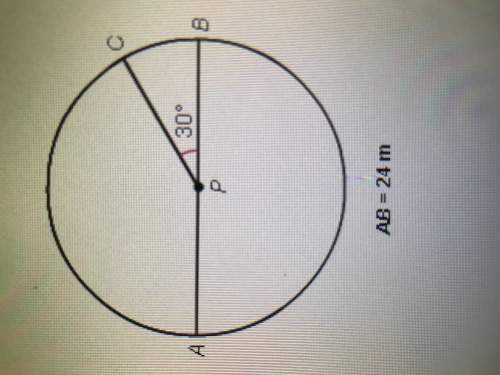
Mathematics, 01.04.2021 23:30, shmote12
Bill makes car payments of $273/month for the next 3 years.
His car loan has an interest rate of 2.6%, discounted monthly.
What was the initial price of the car?

Answers: 3
Other questions on the subject: Mathematics

Mathematics, 21.06.2019 14:00, musicqueen360
Find the equation of the line that goes through the points (4, –1) and (2, –5). use slope formula, equation, to find the slope of a line that passes through the points. m = use slope-intercept form, y = mx + b, to find the y-intercept (b) of the line. b = write the equation in slope-intercept form, y = mx + b.
Answers: 1

Mathematics, 21.06.2019 21:30, chrisgramjooooo2366
In δabc shown below, ∠bac is congruent to ∠bca: triangle abc, where angles a and c are congruent given: base ∠bac and ∠acb are congruent. prove: δabc is an isosceles triangle. when completed (fill in the blanks), the following paragraph proves that line segment ab is congruent to line segment bc making δabc an isosceles triangle. (4 points) construct a perpendicular bisector from point b to line segment ac . label the point of intersection between this perpendicular bisector and line segment ac as point d: m∠bda and m∠bdc is 90° by the definition of a perpendicular bisector. ∠bda is congruent to ∠bdc by the definition of congruent angles. line segment ad is congruent to line segment dc by by the definition of a perpendicular bisector. δbad is congruent to δbcd by the line segment ab is congruent to line segment bc because consequently, δabc is isosceles by definition of an isosceles triangle. 1. corresponding parts of congruent triangles are congruent (cpctc) 2. the definition of a perpendicular bisector 1. the definition of a perpendicular bisector 2. the definition of congruent angles 1. the definition of congruent angles 2. the definition of a perpendicular bisector 1. angle-side-angle (asa) postulate 2. corresponding parts of congruent triangles are congruent (cpctc)
Answers: 1

Mathematics, 21.06.2019 21:30, gonzalezashley152
In a test for esp (extrasensory perception), the experimenter looks at cards that are hidden from the subject. each card contains either a star, a circle, a wave, a cross or a square.(five shapes) as the experimenter looks at each of 20 cards in turn, the subject names the shape on the card. when the esp study described above discovers a subject whose performance appears to be better than guessing, the study continues at greater length. the experimenter looks at many cards bearing one of five shapes (star, square, circle, wave, and cross) in an order determined by random numbers. the subject cannot see the experimenter as he looks at each card in turn, in order to avoid any possible nonverbal clues. the answers of a subject who does not have esp should be independent observations, each with probability 1/5 of success. we record 1000 attempts. which of the following assumptions must be met in order to solve this problem? it's reasonable to assume normality 0.8(1000), 0.2(1000)%30 approximately normal 0.8(1000), 0.2(1000)% 10 approximately normal srs it is reasonable to assume the total number of cards is over 10,000 it is reasonable to assume the total number of cards is over 1000
Answers: 1

Mathematics, 22.06.2019 00:00, kotetravels10
Fill in the blank 1. a rhombus is a rectangle a) always b) sometimes c) never 2. a square is a quadrilateral a) always b) sometimes c) never 3. a trapezoid is a kite a) always b) sometimes c) never 4. a quadrilateral is a kite a) always b) sometimes c) never 5. a square is a rhombus a) always b) sometimes c) never 6. a parallelogram is a rectangle a) always b) sometimes c) never
Answers: 1
Do you know the correct answer?
Bill makes car payments of $273/month for the next 3 years.
His car loan has an interest rate of 2....
Questions in other subjects:


Mathematics, 25.02.2020 03:46


Mathematics, 25.02.2020 03:46


English, 25.02.2020 03:46











